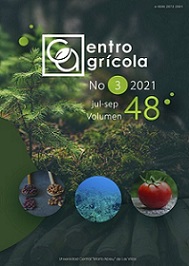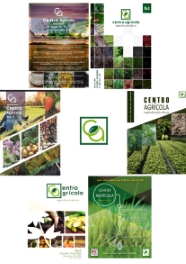SCIENTIFIC ARTICLE
Associated mycobiota to cocoa fruits with symptoms of moniliasis in the equatorial Amazon
Micobiota asociada a frutos de cacao con síntomas de moniliasis en la amazonía ecuatoriana
Karina Carrera-Sánchez1, Lidcay Herrera Isla2, Manuel Díaz Castellanos2, Michel Leiva-Mora2
1 Universidad Estatal Amazónica. Campus Principal km 2 1⁄2 vía a Napo (Paso Lateral), Puyo –Pastaza – Ecuador. CP 160150.
2 Facultad de Ciencias Agropecuarias. Universidad Central “Marta Abreu” de Las Villas, carretera a Camajuaní km 51⁄2, Santa Clara, Cuba. CP 54830.
E-mail: This email address is being protected from spambots. You need JavaScript enabled to view it.
ABSTRACT
The cocoa cultivated in Ecuador is having greatest aroma, exquisite flavor, fragrance and quality for exportation market; it is a strategic species for the Ecuadorian agribusiness. The present study was aimed at characterizing the associate mycobiota to cocoa fruits with symptoms of Moniliasis based on morphological characters in the Ecuadorian Amazon. Infected plant materials (flowers, and fruits) were collected and processed in the laboratory to prepare humid cameras. Once isolated, using the technique of humid cameras and based on morphological criteria the following genera and species of filamentous fungi associated with cacao fruits were identified: Cylindrocladium (Morgan), Dichobotrys (Hennebert) Moniliophthora roreri (Cif.) HC Evans, Stalpers (Samson & Benny), Colletotrichum (Corda) and Phytophthora palmivora (EJ Butler). The results indicated that the morphological features are very useful to identify and characterize filamentous fungi associated with cacao pods. These microorganisms can cause deterioration of the harvested material.




